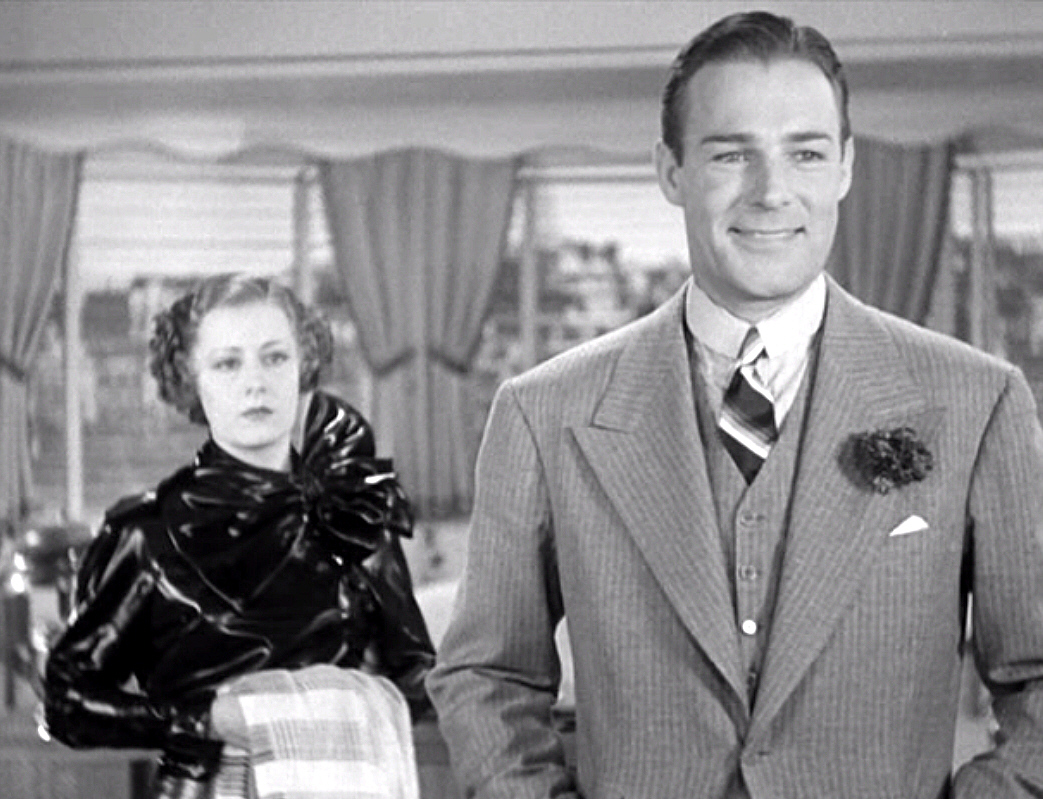Roberta (1935)

Toronto Film Society presented Roberta (1935) on Sunday, April 8, 1984 in a double bill with Dodsworth as part of the Season 36 Sunday Afternoon Film Buffs Series “A”, Programme 9.
Production Company: RKO. Producer: Pandro S. Berman. Director: William A. Seiter. Screenplay: Jane Murfin, Sam Mintz, Glenn Tryon & Allan Scott, from the musical by Otto Harbach, adapted from the novel “Gowns by Roberta” by Alice Cuer Miller. Music: Jerome Kern. Lyrics: Otto Harbach & Dorothy Fields. Dance Director: Hermes Pan. Art Directors: Van Nest Polglase, Carroll Clark. Costumes: Bernard Newman. Music Director: Max Steiner. Cameraman: Edward Cronjager. Editor: William Hamilton. Released by RKO February 12, 1935.
Cast: Irene Dunne (Stephanie), Fred Astaire (Huckleberry “Hank” Haines), Ginger Rogers (Countess Tanka Scharwenka-nee Lizzie Gatz), Randolph Scott (John Kent), Helen Westley (Roberta-Aunt Minnie), Victor Varconi (Ladislaw), Claire Dodd (Sophie Teale), Luis Alberni (Alexander Petrovich Moscovich Voyda), Ferdinand Munier (Lord Henry Delves), Torben Meyer (Albert), Lucille Ball (Girl in Salon).

Fred Astaire and Ginger Rogers were one of the Greatest teams Hollywood has ever seen, and, things being what they are today, ever will see. Making their debut together in 1933’s Flying Down to Rio, which was one of the year’s top-grossing pictures, the former Frederick Austerlitz and the erstwhile Virginia Katherine McMath quickly became America’s dancing sweethearts. A delighted RKO gave them top billing in The Gay Divorcee the following year, and the lineups of ticket-buyers stretched for blocks. Without deliberately trying to pioneer, the film company had set the pattern for a new, imaginative form of intimate musical-comedy on the screen.
Today’s film, Roberta, represents the third outing of the Astaire-Rogers partnership. Oddly enough, the title refers to a comparatively minor character in the film who dies off well before the end.
As usual with Astaire films, the plot is little more than a clothesline on which to hang a succession of dazzling song-and-dance numbers. Roberta was based on a popular 1933 Broadway play by one of the country’s musical giants, Jerome Kern. RKO, often thought of as little more than a “Poverty-Row” studio, allotted an impressive (for 1935) budget of $750,000.00. Providing rather incongruous support for Fred and Ginger were Irene Dunne and Randolph Scott as a pair of feuding lovers. Miss Dunne is best known for her straight-dramatic or comedy roles, while one usually links Scott with horses and a Colt .45. In Roberta Dunne actually gets top billing over Astaire and Rogers.
In common with so many Depression-era films the settings and costumes were unbelievably opulent. And Ginger Rogers trying to pass herself off as a Polish countess has to be heard to be believed. However, even if the endless succession of extravagant evening gowns may seem a trifle much, it’s certainly preferable to some of the shabbily-dressed inhabitants of today’s films.
But, of course, the delight of Roberta is the dancing; made to seem effortless and casual by Astaire, yet the product of countless hard and tedious hours of practice and experimentation and rehearsal by a dedicated perfectionist. And, he had his greatest partner in Rogers, whose tremendous energy never flagged, whose technique became exactly what she needed to dance with Astaire.
Although in private life Fred Astaire and Ginger Rogers were two vastly different people who apparently seldom socialized with each other, on the dance floor they were a marvellous team that brought many hours of pleasure to movie-goers who marvelled at their grace, their precision, their smooth-flowing movements as they danced–and danced–and danced.
And now–an afternoon with Fred and Ginger!!!
Notes by John Thompson










Leave a Reply